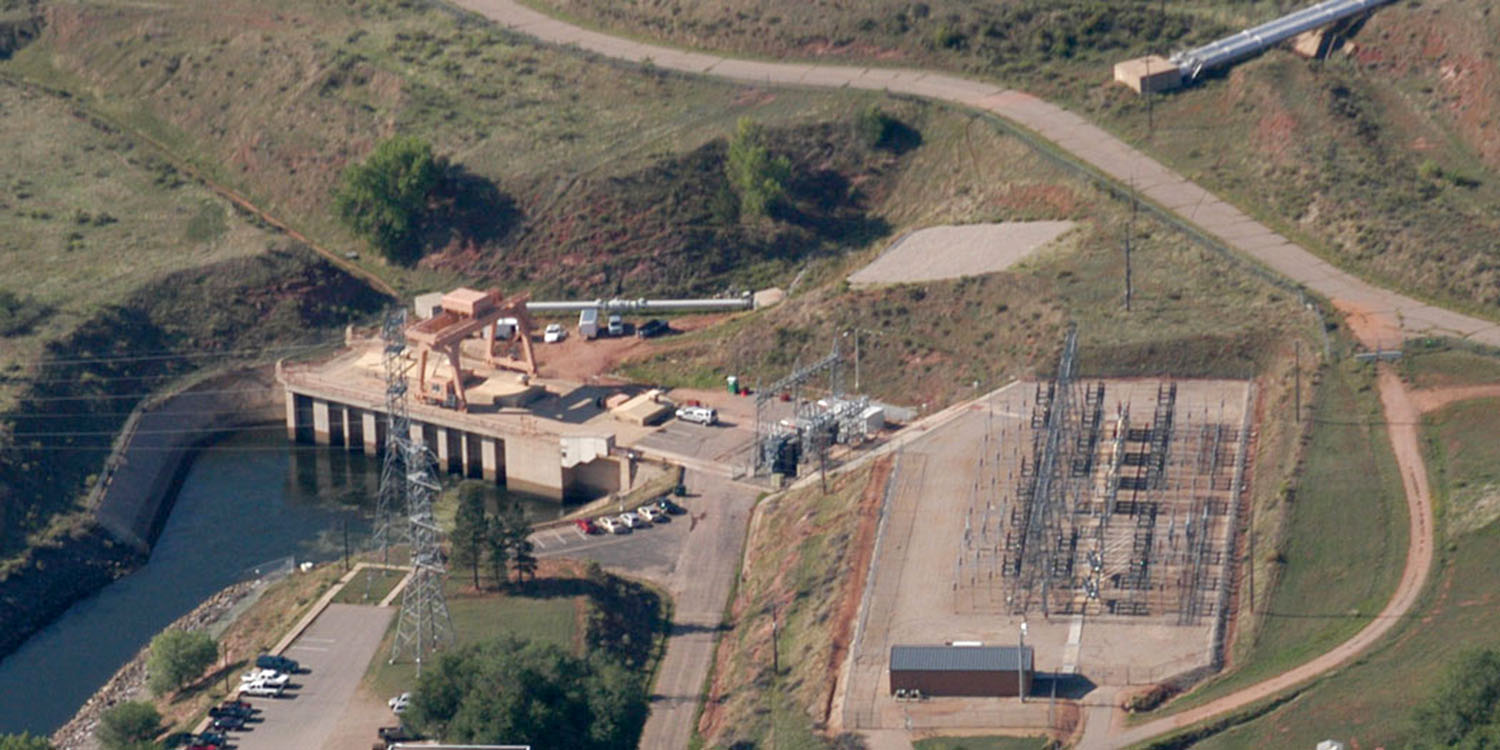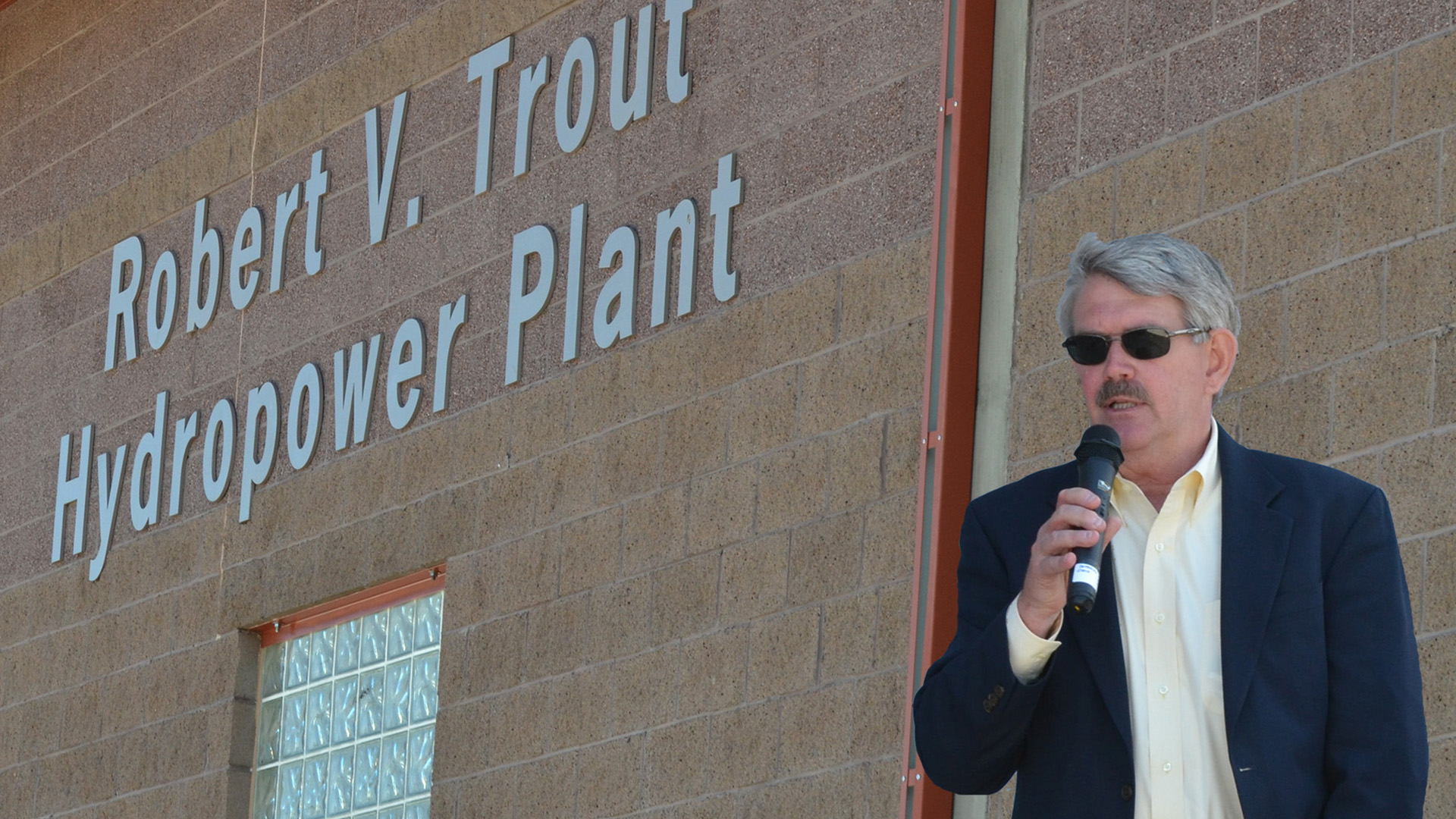Hydropower
Producing Clean Energy
Decades before the terms “clean energy” and “carbon footprint” were ever imagined, the Colorado-Big Thompson Project’s hydroelectric power system was producing millions of kilowatt-hours of electric power without the need for fossil fuels.
The C-BT Project’s six original power plants generate power as the water moves through the system on its way to customers in Northeastern Colorado. Power is generated by water flowing through power plant turbines to produce hydroelectricity.
On average, these power plants generate 770 million kilowatt-hours of renewable energy per year, which is enough to supply approximately 68,000 homes for a year, and offsets an equivalent 1.52 billion pounds of carbon dioxide produced each year by coal-fired power plants.

The U.S. Bureau of Reclamation owns and operates the original six hydropower plants. Northern Water added two additional hydropower facilities: the Robert V. Trout Hydropower Plant at Carter Lake in 2012; and the Granby Hydropower Plant at Lake Granby in 2016. The Trout Hydropower Plant was the first project in the region to receive a Lease of Power Privilege from Reclamation, granting the ability to pursue hydro on the federally-owned facility.
Six of the C-BT Project’s eight power plants are located on the East Slope. The two West Slope power plants include Green Mountain Power Plant at Green Mountain Reservoir on the Blue River near Kremmling, and the Granby Hydropower Plant at the base of Lake Granby Dam.
Plants Respond to Peak Power Needs
The C-BT Project's East Slope power plants supply power for peak electrical demands by using a system of forebays, afterbays and penstocks. When peak electrical power is needed, water is moved from a plant's forebay (a small reservoir above a hydroelectric power plant) into a penstock leading to the power plant. The force of the water moving through the penstock and turbine generates electricity. After passing through the turbine, the water is typically released into an afterbay (a small reservoir located below a hydroelectric power plant).
Power Plant MapPower for the West Slope Pump Plants
When the C-BT Project was planned in the 1930s, the power plants at Lake Estes and Green Mountain Reservoir were designed to provide power to the Farr and Willow Creek pump plants. This was largely due to insufficient electrical infrastructure and power production on the West Slope when the project was built.
Electricity from the Lake Estes Power Plant reaches the Farr and Willow Creek plants via a 69,000-volt transmission line extending through the Adams Tunnel beneath Rocky Mountain National Park. Today, even with adequate West Slope electrical infrastructure and power projection, the Adams Tunnel transmission line still provides the West Slope pump plants with a portion of their electrical needs.
The West Slope pump plants at Farr and Willow Creek annually use 70 million kilowatt-hours, with the remaining 700 million kilowatt-hours sold to customers in Colorado, Eastern Wyoming, Kansas and Western Nebraska.
Original C-BT Power Plants
The U.S. Bureau of Reclamation owns and operates the C-BT Project’s six original hydroelectric power plants, and the Western Area Power Administration markets and distributes the power.
Green Mountain Power Plant
Green Mountain Power Plant is located on the West Slope at the base of Green Mountain Dam on the Blue River southeast of Kremmling. The plant was the first power unit of the C-BT Project to produce electricity in May 1943.
Mary’s Lake Power Plant
Located at Mary’s Lake just south of Estes Park, the Mary’s Lake Power Plant produces power as water flows though the plant’s turbines and is released into Mary’s Lake, an afterbay for the plant. Mary’s Lake helps regulate C-BT Project water and serves as the forebay for the Estes Power Plant.

Estes Power Plant
Located at the west end of Lake Estes, the Estes Power Plant produces power as water flows through penstocks from Mary’s Lake into the plant, then is released into Lake Estes, the plant’s afterbay. Lake Estes also serves as a forebay for water released into the Olympus Siphon on its way to the Pole Hill Power Plant.
Pole Hill Power Plant
Located above Pinewood Reservoir, the Pole Hill Power Plant produces power as water flows through the plant’s turbines and then is released into Pinewood Reservoir. The reservoir is both the afterbay to the Pole Hill Power Plant, and the forebay to the Flatiron Power Plant, the largest power facility in the C-BT Project.
Flatiron Power Plant
Water flows from Pinewood Reservoir into the Bald Mountain Tunnel, down the Flatiron Penstocks and through the Flatiron Power Plant’s turbines before it is discharged into Flatiron Reservoir.
Big Thompson Power Plant
Located at the mouth of the Big Thompson Canyon, this power plant is the lowest elevation C-BT Project hydropower facility on the East Slope. Water flows from the Hansen Feeder Canal though the Big Thompson Power Plant before discharging into the Big Thompson River.
Northern Water Power Plants
Northern Water owns and operates these hydroelectric power plants.

Robert V. Trout Hydropower Plant
Northern Water's first hydropower project, the Robert V. Trout Hydropower Plant, is located at Carter Lake on the East Slope. The plant began generating electricity in May 2012 and can produce 7 to 10 million kilowatt-hours of electricity per year. The Poudre Valley Rural Electrical Association markets and distributes the power from the plant. The Trout Hydropower Plant was the first project in the region to receive a Lease of Power Privilege from the U.S. Bureau of Reclamation, granting the ability to pursue hydro on the federally-owned C-BT Project.
The plant is named after Bob Trout, Northern Water legal counsel for more than 35 years. As with many other initiatives during his long career, Trout was instrumental to the hydro project, from creation of its money management fund to negotiations with key agencies.

Granby Hydropower Plant
Granby Hydropower Plant is located at the base of Lake Granby Dam on the West Slope in Grand County. The plant began operating in May 2016 and can produce 5 million kilowatt-hours of electricity per year. Mountain Parks Electric markets and distributes the plant's power.
